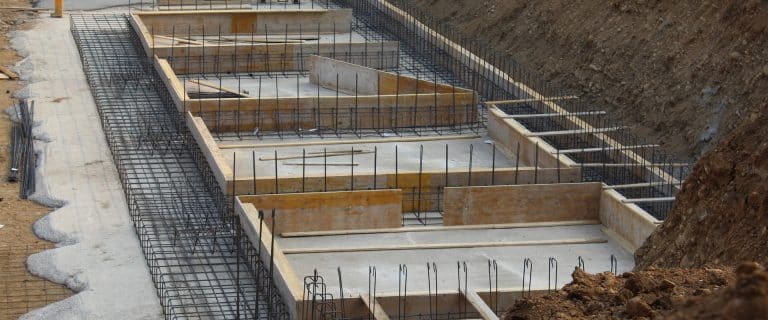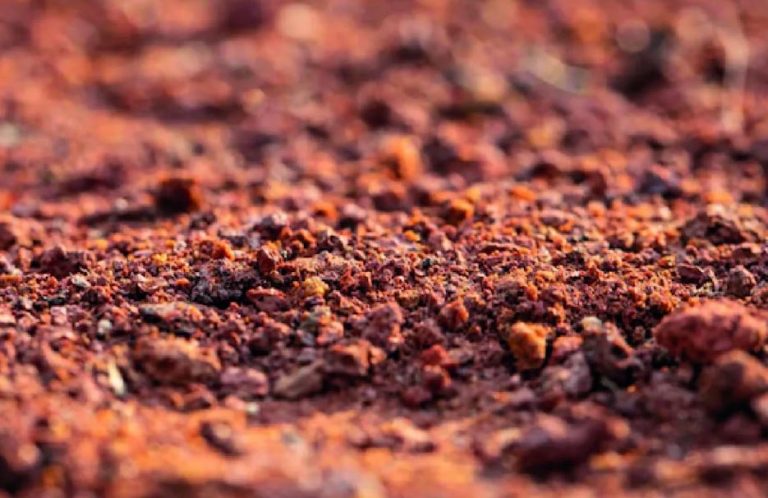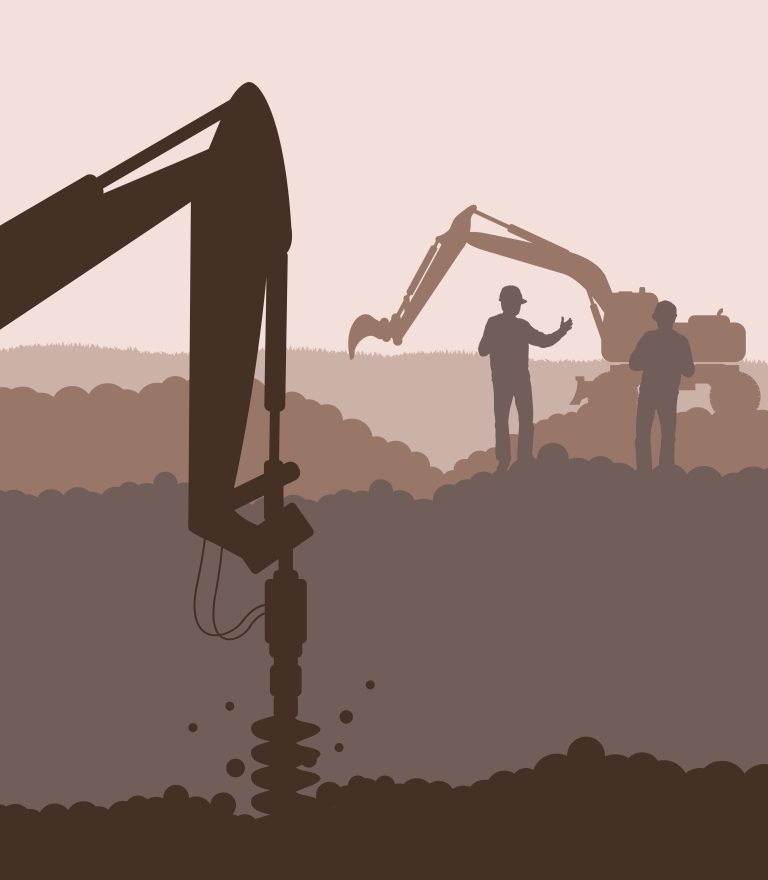
Geotechnics is the engineering subject that deals with the properties of soil (sand, silt and clay) in terms of construction technology, and assessment of slope stability and the risk of landslides.
Geotechnical engineering is concerned with the application of civil engineering technology to some
aspect of the earth, usually the natural materials found on or near the earth’s surface. Civil engineers
call these materials soil and rock. Soil, in an engineering sense, is the relatively loose agglomerate of
mineral and organic materials and sediments found above the bedrock. Soils can be relatively easily
broken down into their constituent mineral or organic particles. Rock, on the other hand, has very
strong internal cohesive and molecular forces which hold its constituent mineral grains together. This is
true for massive bedrock as well as for a piece of gravel found in a clay soil.The dividing line between
soil and rock is arbitrary, and many natural materials encountered in engineering practice cannot be
easily classified. They may be either a “very soft rock” or a “very hard soil.”
Geotechnical engineering has several different aspects or emphases. Soil mechanics is concerned
with the engineering mechanics and properties of soil, whereas rock mechanics is concerned with the
engineering mechanics and properties of rock- usually, but not limited to, the bedrock. Soil mechanics
applies to soils the basic principles of mechanics including kinematics, dynamics, fluid mechanics, and
the mechanics of materials. In other words, soil-rather than water, steel, or concrete, for example-is
the engineering material whose properties and behavior we must understand in order to build with it
or upon it. A similar statement could also be made for rock mechanics. However, because in significant
ways soil masses behave differently from rock masses, in practice, there is not much overlap between
the two disciplines. This divergence is unfortunate from the viewpoint of the practicing civil engineer.
Inconveniently, the world does not consist only of soft or loose soils and hard rock, but rather, most
geo-materials fall somewhere between those extremes.
Foundation engineering applies engineering geology, soil mechanics, rock mechanics, and structural
engineering to the design and construction of foundations for civil engineering and other structures. The
foundation engineer must be able to predict the performance or response of the foundation soil or rock to
the loads the structure imposes. Examples include foundations for industrial, commercial, and residential
buildings,bridges,towers, and retaining walls,as well as foundations for oil and other kinds of storage tanks
and offshore structures. Ships must have a drydock during construction or repairs, and the drydock must
have a foundation. During construction and launch, rockets and appurtenant structures must be safely
supported. Related geotechnical engineering problems that the foundation engineer faces are the stability of natural and excavated slopes, the stability of permanent and temporary earth-retaining structures,
problems of construction, control of water movement and water pressures, and even the maintenance and
rehabilitation of old buildings.Not only must the foundation safely support static structural and construction loads, but it must also adequately resist dynamic loads due to wind, blasting, earthquakes, and the like.
If you think about it, we cannot design or construct any civil engineering structure, whether built
on the earth or extraterrestrial, without ultimately considering the foundation soils and rocks. The
performance, economy, and safety of any civil engineering structure ultimately are affected or even
controlled by its foundation.
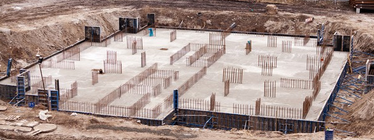
Earth materials are often used as a construction material because they are the cheapest possible
building material. However, their engineering properties such as strength and compressibility are often
naturally poor, and measures must be taken to densify, strengthen, or otherwise stabilize and reinforce
soils so that they will perform satisfactorily. Highway and railway embankments, airfields, earth and
rock dams, levees, and aqueducts are examples of earth structures, and the geotechnical engineer is
responsible for their design and construction. Dam safety and rehabilitation of old dams are important
aspects of this phase of geotechnical engineering. A related consideration, especially for highway and
airfield engineers, is the design of the surface layer on the earth structure-the pavement. Here the
overlap between the transportation and geotechnical disciplines is apparent.
Rock engineering, analogous to foundation engineering for soils, is concerned with rock as a
foundation and construction material. Because most of the earth’s surface is covered with soil (or
water), rock engineering usually occurs underground (tunnels, underground power houses, petroleum
storage rooms, mines, yours, and so on). But some rock engineering problems occur at the surface, such
as in the case of building and dam foundations carried to bedrock, deep excavations to bedrock, stability of rock slopes, and the like.
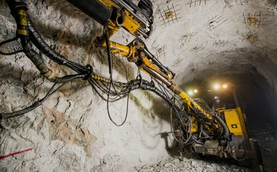
In recent years, geotechnical engineers have become increasingly involved in the solution of
environmental problems involving soil and rock. This interdisciplinary field is called geoenvironmental
engineering or environmental geotechnics. Especially challenging are problems of polluted groundwater, proper disposal and containment of municipal and industrial wastes, design and construction of
nuclear waste repositories, and remediation of hazardous waste repositories and other contaminated
sites. Although all these problems have a major geotechnical engineering component, they are interdisciplinary in nature, and their solutions require that geotechnical engineers work together with environmental and chemical engineers, environmental and public health specialists, geohydrologists, and
regulatory agency personnel.
In presenting some of the typical problems facing the geotechnical engineer, we wanted you to
see, first, how broad the field is and, second, how important it is to the design and construction of civil
engineering structures, as well as to the basic health and safety of society. In a very real sense, geotechnical engineering combines the basic physical and mathematical sciences, geology, and pedology, with
environmental, hydraulic, structural, transportation, construction, and mining engineering. It truly is an
exciting and challenging field.
HISTORICAL DEVELOPMENT OF GEOTECHNICAL ENGINEERING
As long as people have been building things, they have used soils and rocks as a foundation or construction material. The ancient Egyptians, Babylonians, Chinese, and Indians knew about constructing dikes and levees out of the soils found in river flood plains. Ancient temples and monuments built all around the world involved soil and rock in some way.The Aztecs constructed temples and cities on the very poor soils in the Valley of Mexico long before the Spaniards arrived in the so-called New World. European architects and builders during the Middle Ages learned about the problems of settlements of cathedrals and large buildings. The most noteworthy example is, of course, the Leaning Tower of Pisa. Vikings in Scandinavia used timber piles to support houses and wharf structures on their soft clays.The “design” of foundations and other constructions involving soil and rock was by rule of thumb, and very little theory as such was developed until the mid-1700s.
Coulomb is the most famous engineering name of that era. He investigated the problems of earth pressures against retaining walls, and some of his calculation procedures are still in use today. The most common theory for the shear strength of soils is named after him (Coulomb, 1776). During the next century, the French engineers Collin and Darcy and the Scotsman Rankine made important discoveries. Collin (1846) was the first engineer to systematically examine failures in clay slopes as well as the measurement of the shear strength of clays. Darcy (1856) established his law for the flow of water through sands. Rankine (1857) developed a method for estimating the earth pressure against retaining walls. In England, Gregory (1844) utilized horizontal subdrains and compacted earth-fill buttresses to stabilize railroad cut slopes.
By the turn of the century, important developments in the field were occurring in Scandinavia, primarily in Sweden. Atterberg (1911) defined consistency limits for clays that are still in use today.
During the period 1914-1922, in connection with investigations of failures in harbors and railroads,
the Geotechnical Commission of the Swedish State Railways (Statens Jarnvagers Geotekniska Kommission, 1922) developed many important concepts and apparatuses in geotechnical engineering. They developed methods for calculating the stability of slopes as well as subsurface investigation techniques such as weight sounding and piston and other types of samplers. They understood important concepts such as sensitivity of clays and consolidation, which is the squeezing of water out of the pores of the clay. At that time, clays were thought to be absolutely impervious, but the Swedes made field measurements to show they weren’t. The Commission was the first to use the word geotechnical (Swedish: geotekniska) in today’s sense: the combination of geology and civil engineering technology.
Even with these early developments in Sweden, the true father of modern soil mechanics is an Austrian, Prof. Karl Terzaghi. He published the first modern textbook on soil mechanics in 1925, and in fact the name “soil mechanics” is a translation of the German word Erdbaumechanik, which was part of the title of that book (Terzaghi, 1925).Terzaghi was an outstanding and very creative engineer. He wrote several other important books (for example, Terzaghi, 1943;Terzaghi and Peck, 1967; and Terzaghi, Peck, and Mesri, 1996) and over 250 technical papers and articles. He was a professor at Robert College in Istanbul, at Technische Hochschule in Vienna, at MIT, and at Harvard University from 1938 until his retirement in 1956.He continued to be active as a consultant until his death in 1963 at the age of 80.An excellent reference about his life and engineering career is that of Goodman (1999) and is well worth reading.
Another important figure is Prof. Arthur Casagrande, who was at Harvard University from 1932 until 1969.You will see his name often in this book, because he made many important contributions to the art and science of soil mechanics and foundation engineering. Since the 1950s,the field has grown substantially, and many people have been responsible for its rapid advancement. Important contributors to the field include Taylor, Peck, Tschebotarioff, Skempton, Bjerrum, Seed, Ladd, and Leonards.
Both Terzaghi and Casagrande began the teaching of soil mechanics and engineering geology in North America. Before the Second World War, the subject was offered only at a very few universities, mostly as a graduate course. After the war, it became common for at least one course in the subject to be required in most civil engineering curricula. Graduate programs in geotechnical engineering were implemented at many universities. Finally, there has been a real information explosion in the number of conferences, technical journals, and textbooks published on this subject during the past four decades.
In terms of foundation engineering, we have already mentioned the important role that Coulomb and Rankine played in the development of limit state analyses of lateral earth pressures for retaining structures. It should come as no surprise that Terzaghi was a pioneer in this area as well, offering some of the first rational methods for estimating soil capacity to support shallow foundations. In the 1950s,George Meyerhof and Aleksandr Vesic and others similarly began to formulate more fundamentals-based methods for deep foundations. A number of advances in this area of geotechnical engineering were often driven by contractors, innovating to build in difficult soils or use familiar materials in more efficient ways.
Important recent developments you should know about include soil dynamics and geotechnical earthquake engineering, the use of computer modeling for the solution of complex engineering problems, deformation-based analyses and designs, the introduction of probability and statistics into geotechnical engineering analysis and design, and geo-environmental engineering and technology.




